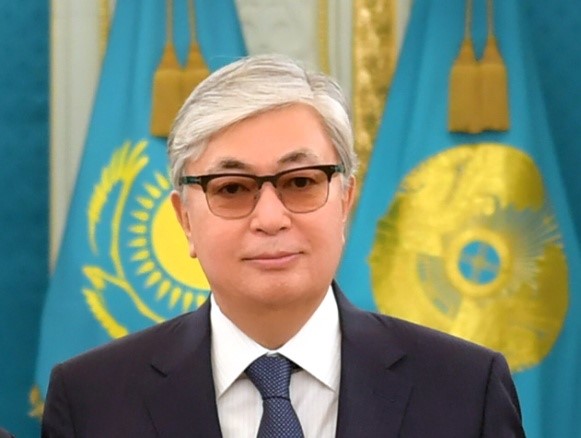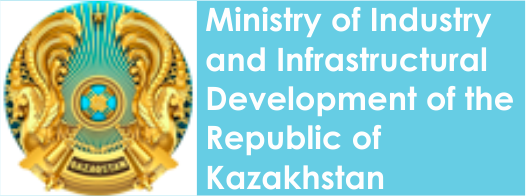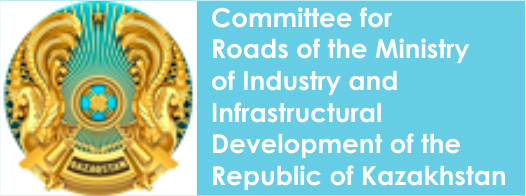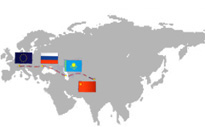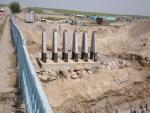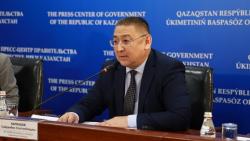
Source of picture: primeminister.kz
At the initiative of the First President - Elbasy Nursultan Nazarbayev, a major tate program Nurly Zhol has been implemented in the country since 2015. As a result of the completion of the first five-year plan, the share of republican roads in good and satisfactory condition was brought up to 88% and local roads — up to 71%. This year, Kazakhstan launched the next five-year plan. The Chairman of the Committee for Roads Sairanbek Barmakov spoke about how the road infrastructure of the republic has changed, what are the overall effect of the program is, and about important projects in the road sector in his interview with PrimeMinister.kz.
At the meeting of the Transport Council on June 10, 2020, the Prime Minister Askar Mamin instructed to speed up the introduction of toll roads. Please tell us which roads will be paid and what work is being done to accelerate the completion time?
Till date, there are 4 Toll Roads with a length of 682 km in the republic, these are Nur-Sultan - Schuchinsk (211 km), Nur-Sultan - Temirtau (134 km), Almaty - Khorgos (295 km) and Almaty - Kapshagai (42 km).
As you know, in 2019 National Company KazAutoZhol held an open investment competition for the installation and maintenance of a Toll Collection System for 11,000 km. As a result of which an agreement was signed with a consortium led by the company Computer Vision Technologies LLP.
The agreement provides for the development of intelligent systems in the road infrastructure and an increase in the length of toll roads of national importance in accordance with the Nurly Zhol State Infrastructure Development Program. By 2024, the investor plans to increase the length of toll roads to 11,000 km.
This year, it is planned to install a Toll Collection System in sections of 5,700 km long, such roads as Shymkent - Uzbek border (to Tashkent), Uralsk - Russian border (to Saratov), Kapshagai - Taldykorgan, Kyzylorda - Shymkent - Taraz, Taraz - Kainar, Aktobe - Uralsk - Russian border (to Samara), Russian border - Aktobe - Kyzylorda, Aktau - Beineu, Atyrau - Dossor - Beineu - Akzhigit - Uzbek border, Nur-Sultan - Pavlodar, Pavlodar - Russian border (Omsk), Pavlodar - Semey - Kalbatau, Nur-Sultan - Kostanay - Russian border (to Chelyabinsk).
Currently, the investor is working on the installation of control arches in the areas of Shymkent - Uzbek border (to Tashkent), Uralsk - Russian border (to Saratov), Aktobe - Uralsk - Russian border (to Samara) and Aktobe - Russian border (to Orenburg).
Till date, all the necessary resources have been mobilized, the pace of construction and installation work is being accelerated to fulfill the tasks set by the Government of the Republic of Kazakhstan.
What should citizens do if for some reason there is no way to pay for a toll road? Are there benefits for paying for the use of toll roads?
Currently, in accordance with the Law of the Republic of Kazakhstan “On Roads,” privileges are provided for the use of toll roads for special vehicles of the following categories: organization of emergency medical care, firefighting services, emergency rescue services, patrol police and military equipment. To date, the issue of amending the current legislation is being worked out in terms of inclusion in the preferential category of citizens of participants, invalids of the Great Patriotic War and persons equated to them.
There is an annual subscription for vehicles registered in areas adjacent to the toll road. The issue of introducing a single subscription for all toll roads is also being discussed.
Regarding the lack of the possibility of payment for travel: on existing sites, as part of the hybrid charging system, payment is provided at a basic rate if there is an advance payment. Cash payments at collection points are made at a differentiated rate.
In new areas with an open charging system, it will be stipulated that if there is no money in the account, that is, no prepayment, payment will be charged at differentiated rates, and if there is any, that is, prepayment, it will be debited at the approved rates. It is assumed that a registered user with the RFID (Radio Frequency Identification) tag installed on the windshield will have discounts on the current rate. Such RFID tags will be issued to each user for the first time for free on toll road sections in customer service centers.
On Dec. 31, 2019, the Government of the Republic of Kazakhstan approved the Nurly Zhol State Program for Infrastructure Development for 2020-2025. What are the results for key projects today and which are planned to be completed before the end of the year?
The priority tasks of the State Program are to increase the share of roads of the republican and local significance in good and satisfactory condition by 2025 to 100% and 95%, respectively, to provide roads with roadside service facilities in accordance with the national standard, as well as complete the repairs to provide comfortable and safe movement of the traffic.
So, this year, 4,000 km of republican roads were covered by construction works: Karaganda - Balkhash - Kapshagai, Aktobe - Atyrau - Astrakhan, Taldykorgan - Ust-Kamenogorsk, Kalbatau - Maykapshagai, Kokshetau - Petropavlovsk - Kurgan - Ugric, Ugric - Burylbaital, Kostanai - Denisovka, Usharal - Dostyk.
According to the results of the year, it is planned to open traffic on road sections with a total length of 2,600 km are as follows:
· Taldykorgan - Ust-Kamenogorsk (763 km) — 763 km;
· Karaganda - Balkhash - Kapshagay (1,056 km) — 645 km (363 km — Karaganda - Balkhash, 282 — Balkhash - Kurty);
· Kalbatau - Maikapshagai (415 km) — 415 km;
· Aktobe – Atyrau - Astrakhan (725 km) — 279 km (60 km — Atyrau - Astrakhan, 219 km — Kandyagash - Makat);
· Merke - Burylbaital (266 km) — 266 km;
· Kokshetau - Petropavlovsk - Kurgan (260 km) — 67 km (60 km — Petropavlovsk - Kurgan, 7 km drive from Kokshetau);
· Usharal - Dostyk (184 km) — 60 km;
· Kostanay - Denisovka (114 km) — 60 km (Rudny-Denisovka)
· Uzynagash - Otar (96 km) — 56 km;
Today, the construction has begun in all regions of the country. For the timely implementation of projects, all preparatory work was completed on time.
The number of workers involved is 200,000 people (100,000 people at construction sites, 100,000 people — in adjacent industries).
In 2020, 236 billion tenge was provided for the development of roads of the local network, of which 181.2 billion tenge were allocated for roads of regional and district significance, and 47.8 billion tenge for the road network of cities of republican significance. It is planned to cover 4,000 km with repairs and increase the share of local network roads in good and satisfactory condition to 75%.
Repair work covered 1,500 kilometers of republican roads. Overhaul covered 443 km, of which by the end of the year it is planned to put into operation 62 km of roads, including:
· Kokpek - Zhalanash - Kyrgyz border — 23 km (Almaty region),
· Chapaevo - Zhalpaktal - Kaztalovka — 35 km (West Kazakhstan region),
· Almaty - Bishkek (Altyn Orda) — 4 km (Almaty region).
The average repair covered 1,119 km of roads (recycling method — 562 km, paving device — 211 km, anti-skid road surfacing method — 307 km, microsurficing device — 39 km).
Mr. Barmakov, tell us about the content of the road network in the winter season 2019-2020. What did the road workers face this winter? Why do most domestic roads fail after every winter?
The length of the network of national roads is 24,900 km, of which 82% (20,400 km) are kept by Kazakhavtodor LLP.
Toll sections of roads with a length of 682 km are maintained by the branch of the Directorate of Toll Roads, NC KazAutoZhol. (The remaining sections with a length of 3,800 km were contracted by transient reconstruction and repair sites).
As part of the preparation of national roads for winter maintenance, cutting down trees and shrubs on slopes was carried out, holes were closed for 6,259 Nos. of Culverts, 4,924 Nos. of temporary Road Signs and 36,277 Nos. of Snow Shields were installed.
In addition, the necessary materials were prepared for winter maintenance, salt — 13,900 tons, sand — 61,500 m3, screenings — 61,600 m3, fuel and lubricants — 1,325,800 liters.
The readiness of winter special equipment amounted to about 90%.
In this regard, Kazakhavtodor LLP purchased 194 pieces of equipment, of which 114 pieces — for winter keeping. In addition, work was carried out to attract 160 pieces of rental equipment.
The winter period of 2019-2020 began in October 2019 with precipitation in the form of wet snow, the formation of ice and worsening weather conditions in the Akmola, East Kazakhstan and North Kazakhstan regions.
So, in January 2020 adverse weather conditions (snow, blizzard, limited visibility) persisted in 6 regions (Akmola, Aktobe, East Kazakhstan, Karaganda, Pavlodar, North Kazakhstan).
A record amount of precipitation fell in the Akmola and Karaganda regions (approximately 50 mm fell at a norm of 16 mm), which, according to the data of the Kazhydromet RSE, exceeded the norm by 3 times.
At the same time, prolonged precipitation was accompanied by a strong gusty wind and blizzard, which did not provide visibility on the road.
In this regard, an emergency mode was announced in the city of Nur-Sultan.
In some areas, work on cleaning the roadway was carried out around the clock.
Today, one of the main reasons for the destruction of certain sections of roads is traffic of heavy vehicles with violation of weight parameters.
The movement of heavy vehicles, especially in the spring, leads to the destruction of roads.
Territorial inspections of transport control, the local police service, regional branches of NC KazAutoZhol and LLP Kazakhavtodor conduct raids to prevent the movement of these vehicles, however, these measures are temporary. This year, the Akimat of the city of Nur-Sultan plans to build 10 streets with a length of 9 km, an average repair of 150 streets with a total length of 100 km.
Which countries do you exchange experience with in the field of road repair and maintenance? Which countries invest in the construction of our roads?
In general, borrowed funds from the International Financial Institutions (IFIs) such as the EBRD, ADB, IBRD, IDB etc., are attracted to the development of transport infrastructure.
At the same time, in 2015 Elbasy initiated the Nation’s Plan “100 Concrete Steps,” within which 58 steps are being implemented, the purpose of which is to attract strategic investors for the development and maintenance of road transport infrastructure.
So, in 2015, Exim Bank borrowed for the reconstruction of about 2,000 km of republican roads, which are currently under active work.
Since 2018, they have begun to actively apply the PPP mechanism. In 2018, a concession agreement was signed with the Turkish-Korean consortium for the implementation of the Big Almaty Ring Road (BAKAD) project. The project is implemented using innovative technologies in the field of road construction.
Investments of the Turkish-Korean consortium, as well as the development banks of the EBRD, EDB and IDB were attracted to implement this concession project of republican significance.
At the same time, in 2019, an agreement was concluded with a Kazakh-Taiwanese company on the introduction of a toll system for 11,000 km of republican roads using the latest world technologies.
The planned open charging system will not only ensure maximum collection of fees, but also monitor the condition of the road network and traffic safety. The project will be implemented through the investments of Kazakh banks.
In terms of content, I would like to note that the previously mentioned BAKAD project will be maintained by Korean companies from the consortium for 15 years in accordance with international standards for road maintenance. From all this, one should expect the enormous experience of Kazakhstani specialists involved in the cycle of implementation, maintenance, and servicing of projects.
A large-scale road repair began this year in Shymkent, and one of the important projects is the bridge of republican significance, which will connect the road between Shymkent and Tashkent in the future. When do you plan to complete this project and when will the highway be brought to the bridge?
A section of the A-2 highway (South-Western bypass of the city of Shymkent) with a length of 31.6 km was transferred to the balance of the city of Shymkent in 2016. To reconstruct this highway, design estimates are being developed. Design and estimate documentation are divided into 8 sections; today, design and estimate documentation is ready for 4 sections (total length 7.5 km, 6.4 billion tenge)
Currently, work is already underway at 3 sites (total length 5.6 km, 5.1 billion tenge).
One of the sections is a bridge over the Badam River (in the area of the livestock market). The bridge consists of 2 parts (left, right) in 2019, the left part of the bridge was built, in 2020 the old bridge was dismantled, and the construction of the right side is underway on the site of the old bridge. The completion of construction is scheduled for November 2020.
What are the requirements for the quality of work and materials during construction, reconstruction, repair, and maintenance of roads? Are there new technologies that have been introduced in recent years?
In terms of the quality of work, requirements are met to comply with the conditions established by the design and technical documentation, the basis of which is the requirements of regulatory documents that are harmonized with best international practice.
Compliance control is ensured by five-step control: the customer, contractor, technical supervision, the author of the project. And the fifth step is the National Center for Quality of Road Assets, which was created last year.
In addition, the Adaldyk Alany project office is also functioning based in Center.
In general, over the past year, these measures have had a positive result in terms of timely detection and elimination of non-compliances, materials that are unsuitable for use are rejected.
One of the fundamental innovations are 3 new approaches to the quality of tested on the republican network:
· the first is monitoring of warranty areas, in terms of the timely detection of defects that are eliminated by the contractors themselves;
· the second is an instrumental assessment of the actual condition of roads by mobile laboratories, which record surface defects, evenness, and other parameters of roads. These results form the basis of network repair planning for 3 years;
· the third is road safety monitoring, because of which road accident risk levels are established and a set of measures to reduce them is developed.
In general, by the end of this year it is planned to draw up an objective rating of the quality of repair and construction of roads, respectively, of contractors and technical supervision engineers.
In terms of the issue of new technologies, I would like to highlight the full-scale use of polymer modified gravel-mastic and asphalt concrete mixtures both in construction and reconstruction, and in areas of medium and overhaul.
In addition, construction companies have well mastered recycling technology, which allows to reduce costs associated with the complete reconstruction of pavement in the framework of road repair.
These technologies are used both on the roads of the republican network and on the local and streets of the settlements.
At the same time, the issue of creating a system of experimental training grounds on the existing republican road network is being considered, for the introduction of new technologies and materials in various climatic zones.
This will make it possible to systematize the policy of introducing new materials and technologies, to make it transparent for industry and public organizations, which was not previously the case.
What are the main problems on the roads in Kazakhstan? What road maintenance plans exist for 2020-2021?
One of the main issues facing the maintenance of roads is the lack of funds, respectively, this affects the lack of necessary equipment. This year, 26.6 billion tenge or 62% of the requirement standard (normative 43 billion tenge) is provided for the maintenance of national roads.
For our part, we have now approved action plans for the preparation of roads for the upcoming autumn-winter period.
As part of the implementation of this Plan, work has begun on the preparation of production bases, road-maintenance equipment. The snow removal equipment is being revised and the necessary restoration work is foreseen by Sep. 1, 2020.
In addition, to provide sufficient equipment for winter maintenance on the example of last year, it is planned to attract rental equipment. Already now in the regions the issue of concluding agreements of intent for rent is being worked out. Also, the procurement of the necessary anti-icing materials, snow shields and milestones for snow-covered areas is made. On the experience of past years, snow-bearing areas are determined to ensure special control over them and a roadmap arrangement has been prepared. In addition, in order to improve the quality of maintenance, starting in July 2020, it is planned to introduce defect-free maintenance on pilot sections of national roads with a length of 424.4 km (Aktobe - Martuk — 92.4 km, Kapshagai - Taldykorgan — 186 km and Semey - to the border of Pavlodar region — 146 km.)
To this end, this year, Recommendations on assessing the level of defect-free content were approved.
In the case of the effectiveness of defect-free maintenance in the pilot sections, it is further planned to gradually introduce the experience gained in other sections of the roads.
Another problematic issue is the creation of emergencies by road users; the driving culture leaves much to be desired. When road conditions improve, drivers often violate the rules of the road when observing the speed limit. To reduce and prevent traffic accidents, joint actions are taken together with the Administrative Police Committee of the Ministry of Internal Affairs of the Republic of Kazakhstan in accordance with the approved Road Safety Action Plans.
Also, a lot of criticism arises regarding roadside service facilities. It should be noted that the bulk of criticism comes from the lack of interest among entrepreneurs in bringing existing roadside service facilities into line with the requirements of the National Standard.
In this regard, I believe that the regional akimats need to strengthen work in this direction.
In turn, the ministry provides a phased arrangement of sanitary and hygienic points along highways of republican significance. This year, it is planned to install 70 sanitary and hygienic points.
Until the end of 2025, within the framework of the state program Nurly Zhol for 2020-2025, it is planned to ensure the installation of 297 Nos. of Sanitary and Hygienic Facilities.




